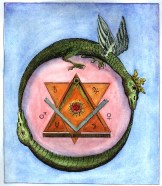THE ANCIENT GNOSTIC CHRISTIAN MOVEMENT
The ancient Gnostic Christian movement emphasized the quest for understanding,
but not a common, mundane understanding; they searched for a higher knowledge,
a more profound insight into the deep and secret elements of God. Like
other mystics, Gnostics admitted that this saving knowledge cannot be acquired
through memorization of phrases or the study of books; nevertheless, like
other mystics, they composed numerous documents explaining the nature of
spiritual gnosis.
These Gnostic texts proclaim a completely good and transcendent God,
whose enlightened greatness is utterly unfathomable and essentially indescribable.
Yet this divine Other can be experienced in a person's inner life, for
the spirit within is actually the divine self, the inner spark or ray of
heavenly light. The tragedy of human existence, however, is that most people
fail to realize the fulfillment of the divine life, because of the harsh
world that functions as the stage for the human drama.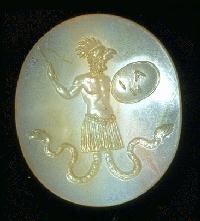
The Gnostics understood this mortal world, with all its evils and distractions,
to be a deadly trap for one who seeks knowledge. Moreover, the divine spirit
is imprisoned by the passions of the sensual soul and the elements of the fleshly body.
Gnostic texts employ various figures of speech to depict the sorry fate
of the entrapped spirit: it is asleep, drunk, sick, ignorant, and in darkness.
In order to be liberated, then, the spirit needs to be awakened and brought
to sobriety, wholeness, knowledge, and enlightenment. This transformation
in one's life, Gnostics maintained, is accomplished through a call from
God - the God within and without - to discover true knowledge and rest.
For Gnostic Christians, the source of the divine call is Christ.
Because of their beliefs, many Gnostics were considered dissidents in
the ancient world. They called into question the values of "civilized"
society and instead fostered spiritual values and lifestyles. Some radical
Gnostics retreated from the world to the solitary life of the monk or the
ascetic, and refused to participate in the everyday business of human society.
Other equally radical Gnostics flaunted their disdain for conventional
human values by disregarding the amenities of polite society and practiced
a libertine way of life. Most Gnostics, however, probably led normal lives
in society, while engaging in an inner, spiritual quest for God.
Within the church as well, Gnostic believers often advocated a faith
and life quite different from what church leaders were promoting. Gnostic
Christians challenged the authority of the priests and bishops and suggested
that a spiritual, Gnostic life devoted to a spiritual, Gnostic Christ allowed
them to approach and embrace God directly: thus, the station and necessity
of the church was eliminated. For their stance Gnostic Christians were
eventually condemned as heretics in the debates about orthodoxy and heresy
that raged within the early church, and most of their books were repressed
or destroyed by their triumphant opponents.
Prior to the discovery of The Nag Hammadi Library, there were relatively
few reliable sources of information regarding the Gnostics. Much of what
was known came from the hostile writings of the philosophers and theologians
who tried to silence the Gnostics. And now The Nag Hammadi Library finally
allows the Gnostics to speak for themselves and present their theology
in a fair and attractive manner.
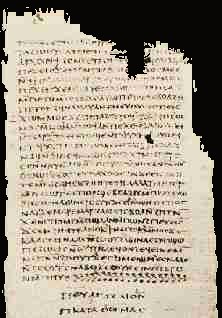 THE NAG HAMMADI DISCOVERY
THE NAG HAMMADI DISCOVERY
The discovery at Nag Hammadi was very significant to Gnosticism. Beyond the fact that it contained a wealth of information, it put Gnosis in a new light. It was no longer only portrayed by the accounts of heresiologists and maybe a few surviving documents. For Gnostics it was the single most important discovery of all time. One of the important aspects of the find is that it proved that Gnosticism is not strictly a Christian heresy. Some documents that were found are entirely un-Christian, others contain elements of Christianity and even words spoken by Jesus himself. As for the discovery in itself, it is an interesting one; it was not discovered by archaeologists, in fact local farmers recovered the texts quite by accident.2
In December 1945, a most startling discovery was made. Two Egyptian
fellahin [(fel"a-hen'), Arabic for a peasant or agricultural laborer] were
digging for natural fertilizer in the Nile River valley at the foot of
a most marvelous cliff called the Jabal al-Tarif near the town of Nag Hammadi
when they happened to unearth a sealed storage jar. The jar lain buried
there in the sand for centuries. One of the farmers, Muhammad Ali al-Samman
Muhammad Khalifah tells the story of how he feared to open the jar lest
he release a jinn (or spirit) imprisoned within it. After some consideration,
Muhammad Ali thought perhaps there was a treasure of gold to be found.
Soon, his fear of jinns was overcome by his dreams of gold and he opened
the jar. According to Muhammad Ali, indeed, there was gold inside: it flew
out of the jar and ascended to the sky, leaving a collection of papyrus
books which he threw upon his camel and took home.
The gold that Muhammad Ali saw was probably tiny papyrus fragments.
Bits of papyrus, golden in color and glistening in the sun, could easily
be mistaken for gold by one who hoped to find treasure. As disappointed
as Muhammad Ali was that day, he did find a treasure, more valuable perhaps
than any jar of gold: a collection of ancient manuscripts, now commonly
referred to as the The Nag Hammadi Library in reference to its town of
discovery.
This manuscript discovery consists of thirteen codices, or books, containing
some 52 texts, the majority of which were previously unknown. Most of the
texts reflect the teachings of a mystical, esoteric religious movement
commonly known as Gnosticism (from the Greek word gnosis, "knowledge").
The texts are also, with few exceptions, Christian documents, and thus
provide valuable new information about the character of the early church,
and about the Gnostic Christians within the church, during its first, formative
centuries.
Books
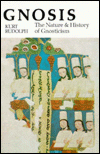
-
Gnosis: The Nature and History of Gnosticism, by Kurt Rudolph
-
The Elements of Gnosticism, by Stuart Holroyd
-
The Gnostic Gospels, by Elaine Pagels
-
The Gnostic Jung, selected and introduced by Robert A. Segal
-
The Allure of Gnosticism, by Robert A. Segal
-
Gnosticism and the New Testament, by Pheme Perkins
-
The Gnostic Religion, by Hans Jonas
For more books about Gnosticism click the book.
Links

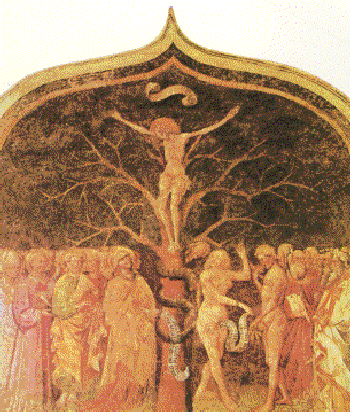
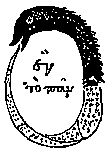



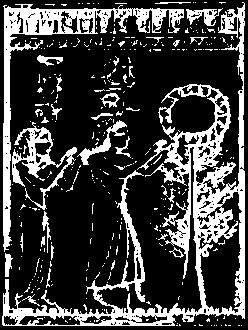
![[Blue Ribbon Campaign icon]](http://br.eff.org/br.gif)




